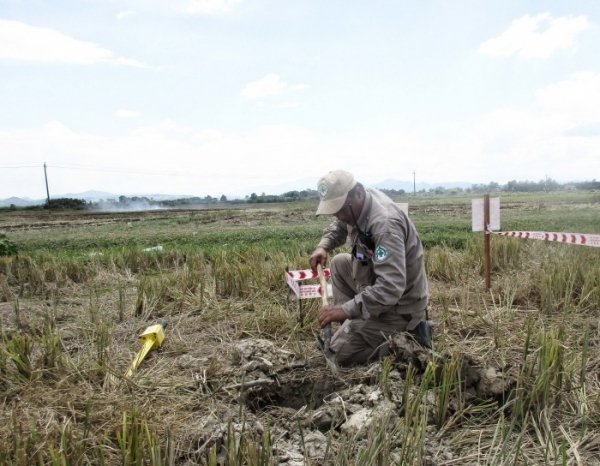The data contained in the eleventh edition of the annual Cluster Munition Monitor report, published in November 2020, shows that, in the last 70 years, almost the entire globe has been affected by cluster munitions. More specifically, they have been used in Southeast Asia, Southeast Europe, the Caucasus, the Middle East and North Africa, sub-Saharan Africa, Latin America and the Caribbean.
Cluster munitions are conventional munitions made up of "containers" which, after launching, release explosive submunitions endowed with enough power to kill the target. Because of the impossibility of distinguishing between combatants and civilians during their use, and the dispersion of unexploded devices in the surrounding environment, in 2010 the "Convention on cluster munitions" came into force.To date, the Convention has 110 States Parties and 13 signatories, and aims at prohibiting the use, production, transfer and storage of cluster munitions.
Nevertheless, the use of cluster munitions is still recorded in the non-signatory States of the MENA region, particularly in Libya and Syria. In Libya, General Haftar's militias were responsible for detonating cluster munitions during several attacks on the city of Tripoli in 2019; while, since July 2012, at least 686 attacks have been conducted in Syria with this type of weapon, including at least 11 carried out between August 1, 2019 and July 31, 2020. IDue to the complex mechanism of cluster munitions, it is almost impossible for non-state actors (rebels and jihadists) to obtain them which suggests that they have been used by the Syrian government forces. Hence, it is not surprising that the 83% of the victims recorded between 2010 and 2019 were located in Syria, where 3,575 civilians were directly hit by the cluster munitions’ denotation or contaminated by the explosive material released.
Globally, the various estimates carried out in the countries affected by cluster munitions report the existence of at least 56,000 victims from the mid-1960s to date, out of which 59% are within the states that are currently parties to the "Cluster Munitions Convention". The countries with the highest number of victims are: the People Democratic Republic of Laos, with 7,755; Syria, with estimated 3,580 casualties; and Iraq, with 3.070. However, these data would,probably, be much higher if all the victims from past conflicts characterized by the extensive use of cluster munitions in Southeast Asia, Afghanistan and the Middle East (notably in Iraq, where there have been estimates of between 5,500 and 8,000 casualties since the First Gulf War).
Casualties of cluster munitions are mainly children, who often grow up in highly contaminated areas and are prone to picking up and playing with objects found on the ground, unaware of what they are. Namely, 40% of the total number of victims recorded since 2010 are children, followed by men, who are constantly at risk by carrying out work activities such as cultivation of fields and pastoralism.
In 2019 there was also an increase in the number of victims (286) - 99% of whom are civilians - compared to 2018 which counted 149 victims. 2018 was the year with the lowest toll reported within the last 8 years, while the peak was reached in 2016 with 971 casualties.
To reverse this trend, the States Parties and the signatories to the Convention have already implemented the decontamination activities and set up risk education programs, to increase civilian preparedness in case of danger. However, these measures will not serve their goals if they are not accompanied by coordinated mechanisms of prevention and assistance for the victims of cluster munitions and their families. In this regard, the report suggests that States improve the development of the post-conflict reconstruction building processes and finance physical rehabilitation at national and international level. It is crucial to continue to work to ensure that this type of explosive weapons is no longer used in armed conflicts.
To read more, please visit:
http://www.the-monitor.org/media/3168672/cmm2020.pdf
Author: Antonella Palmiotti; Editor: Aleksandra Krol







